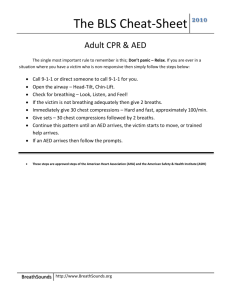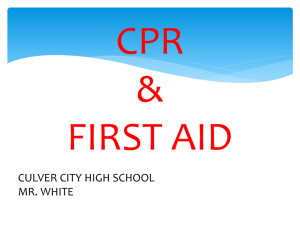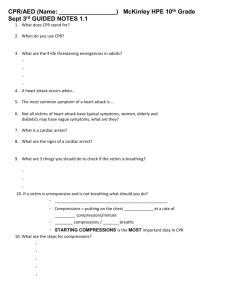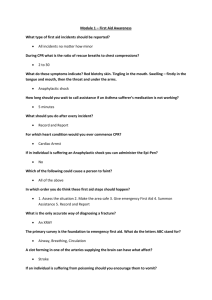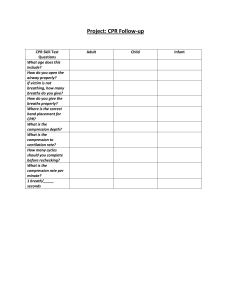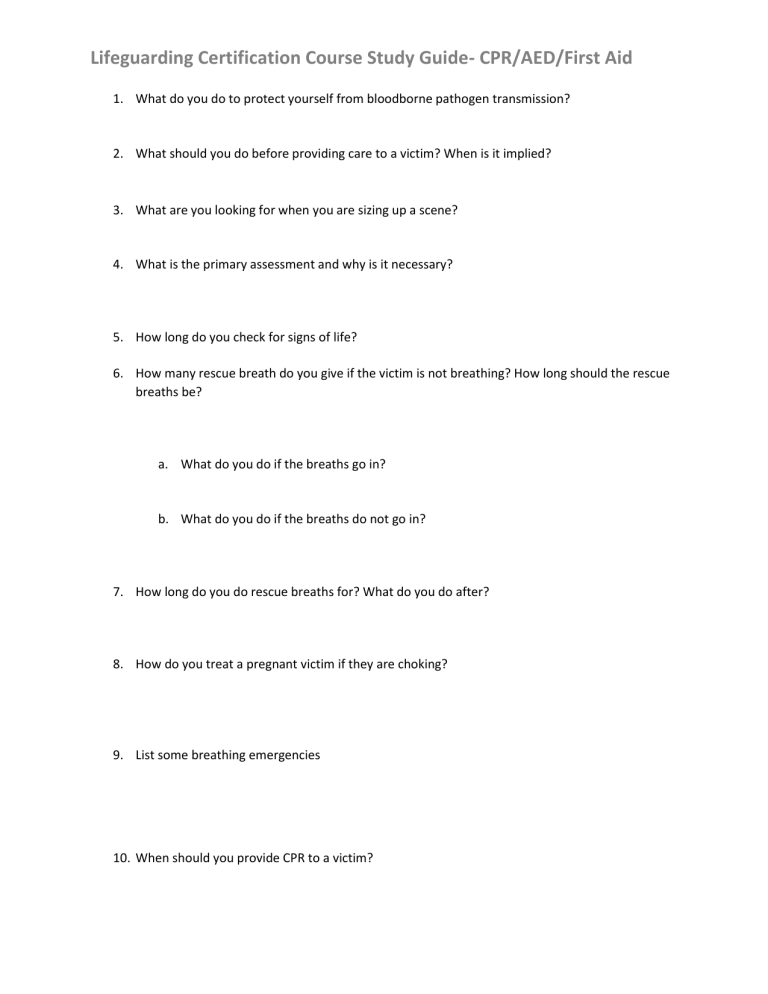
Lifeguarding Certification Course Study Guide- CPR/AED/First Aid 1. What do you do to protect yourself from bloodborne pathogen transmission? 2. What should you do before providing care to a victim? When is it implied? 3. What are you looking for when you are sizing up a scene? 4. What is the primary assessment and why is it necessary? 5. How long do you check for signs of life? 6. How many rescue breath do you give if the victim is not breathing? How long should the rescue breaths be? a. What do you do if the breaths go in? b. What do you do if the breaths do not go in? 7. How long do you do rescue breaths for? What do you do after? 8. How do you treat a pregnant victim if they are choking? 9. List some breathing emergencies 10. When should you provide CPR to a victim? Lifeguarding Certification Course Study Guide- CPR/AED/First Aid 11. What are the 5 reasons you can stop CPR in progress? 1. 2. 3. 4. 5. Compressions/Breaths Compressions/Breaths 1 Person 2 Person Adult Child Infant / / / / / / Depth of compressions Hand Position Length of breaths Compressions A Minute 12. How long do you do CPR for? 13. How do you ensure you are providing high-quality CPR and high-quality chest compressions? 14. Your initial impression reveals severe life-threatening bleeding in an adult victim who appears to be unresponsive. What should your next step should be? 15. What is the purpose of the secondary assessment? 16. What does SAMPLE stand for and why is it important? Lifeguarding Certification Course Study Guide- CPR/AED/First Aid 17. What are the signs and symptoms of sudden illness? How do you treat them? 18. What are the steps in the Cardiac Chain of Survival? 19. What are the steps in the Pediatric Cardiac Chain of Survival? 20. What are the steps in using a AED? 21. What do you do if the AED pads are touching each other when place on the victim? 22. An AED has advised that a shock should be given. Which What should you do next? 23. What are you looking for when you size-up the scene? 24. What information should you be ready to give when you call EMS? 25. What is the first step you should take in caring for a victim with burns? 26. How do you treat a victim suffering from a seizure in water?
